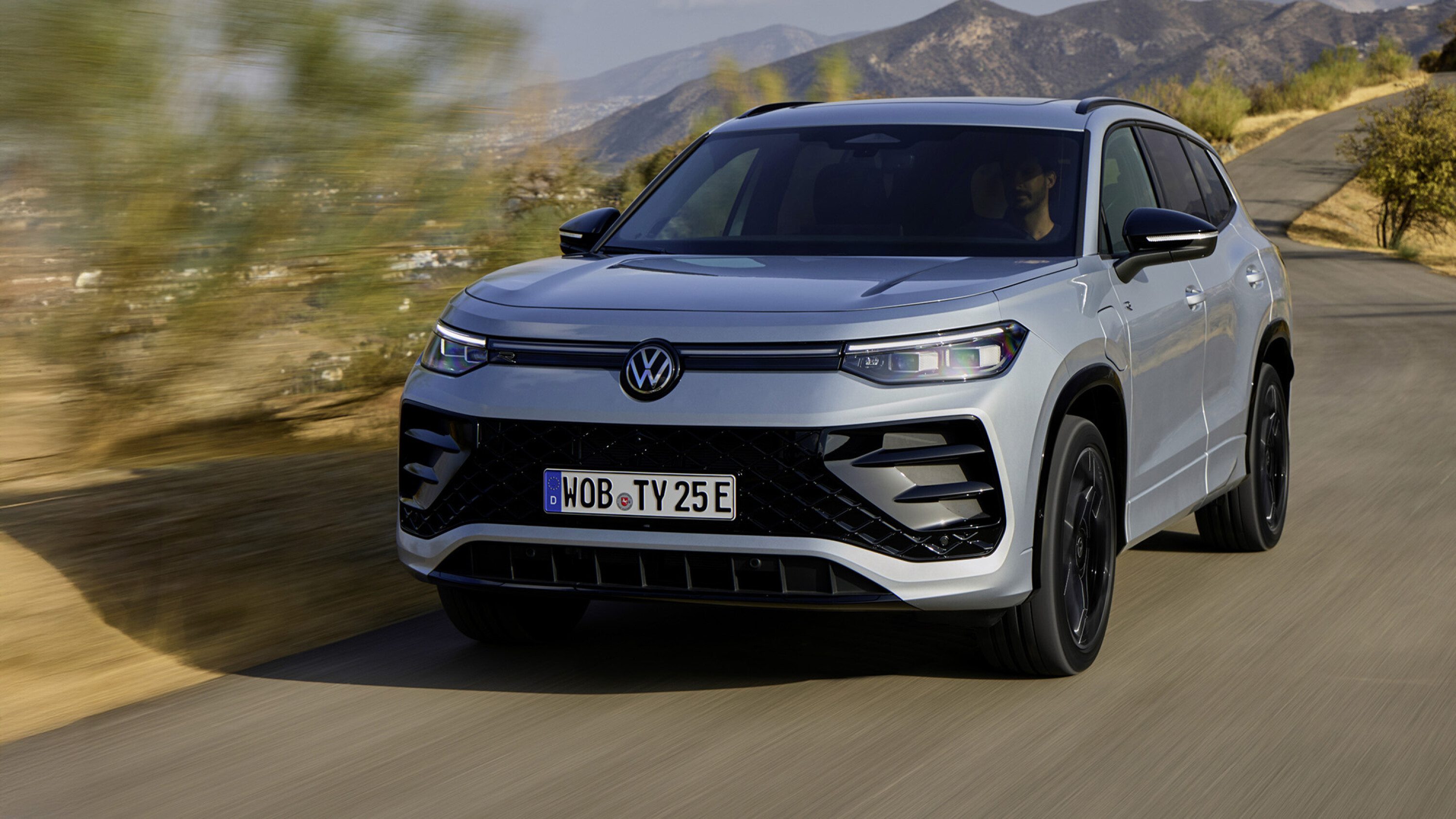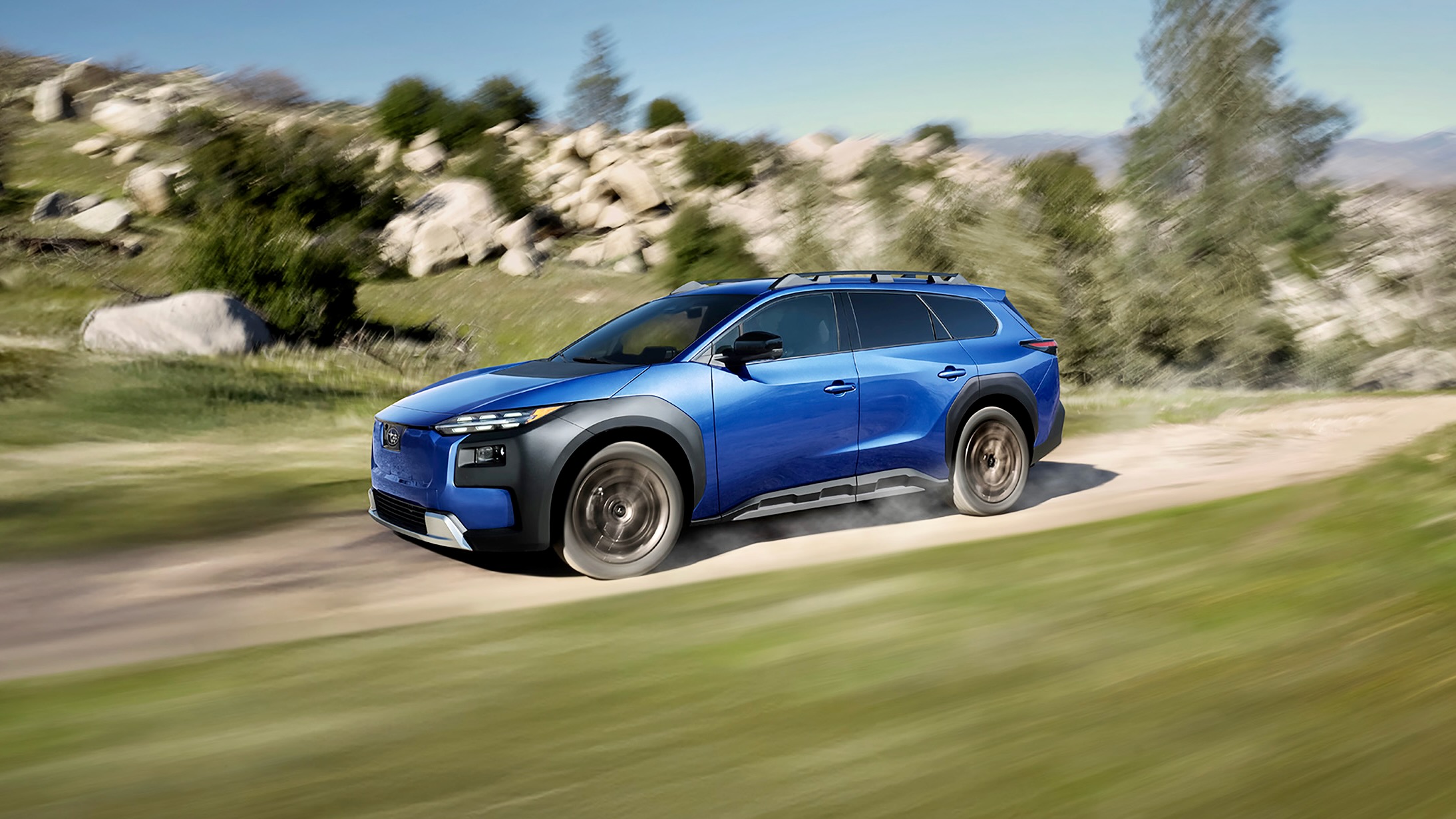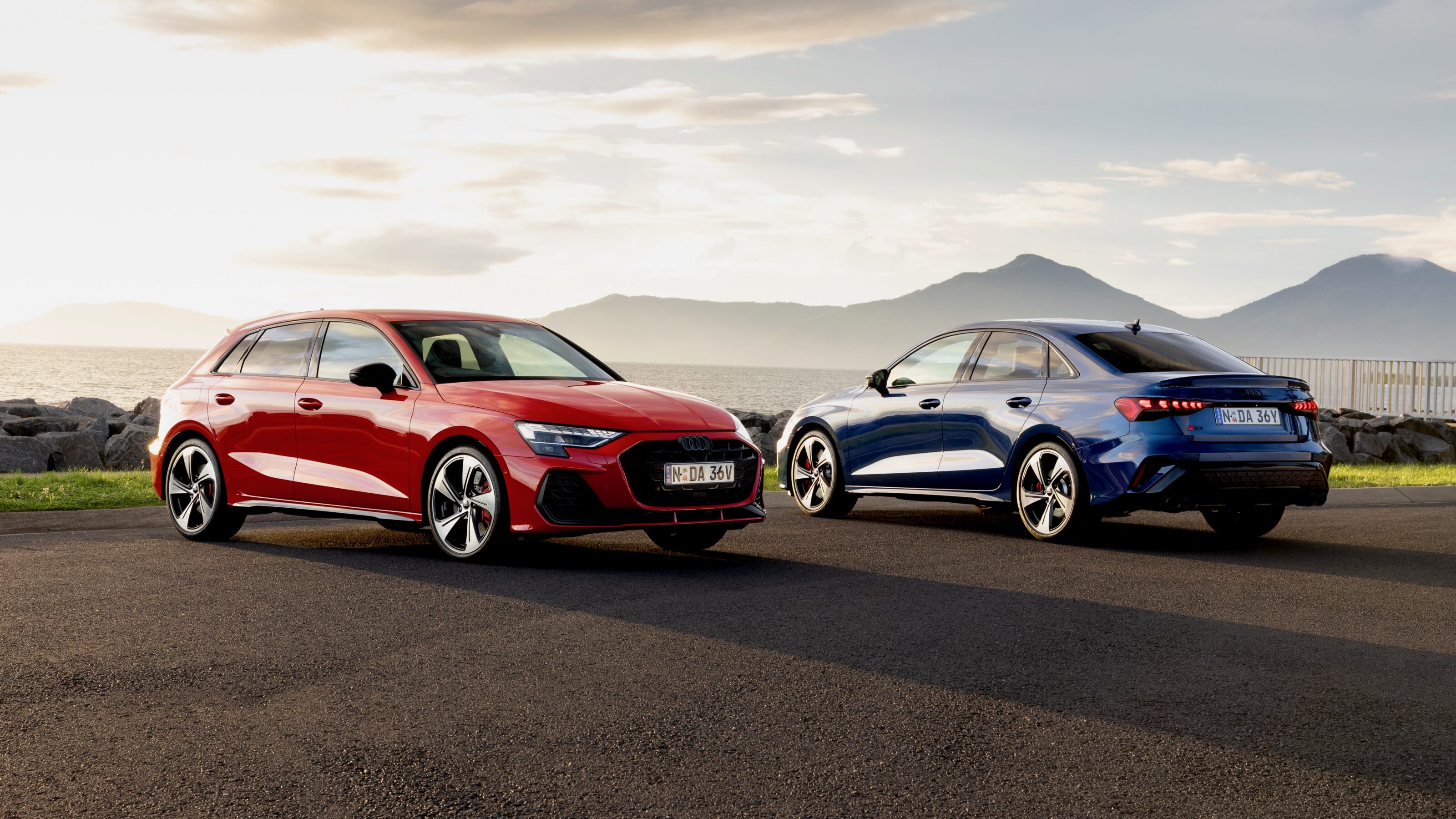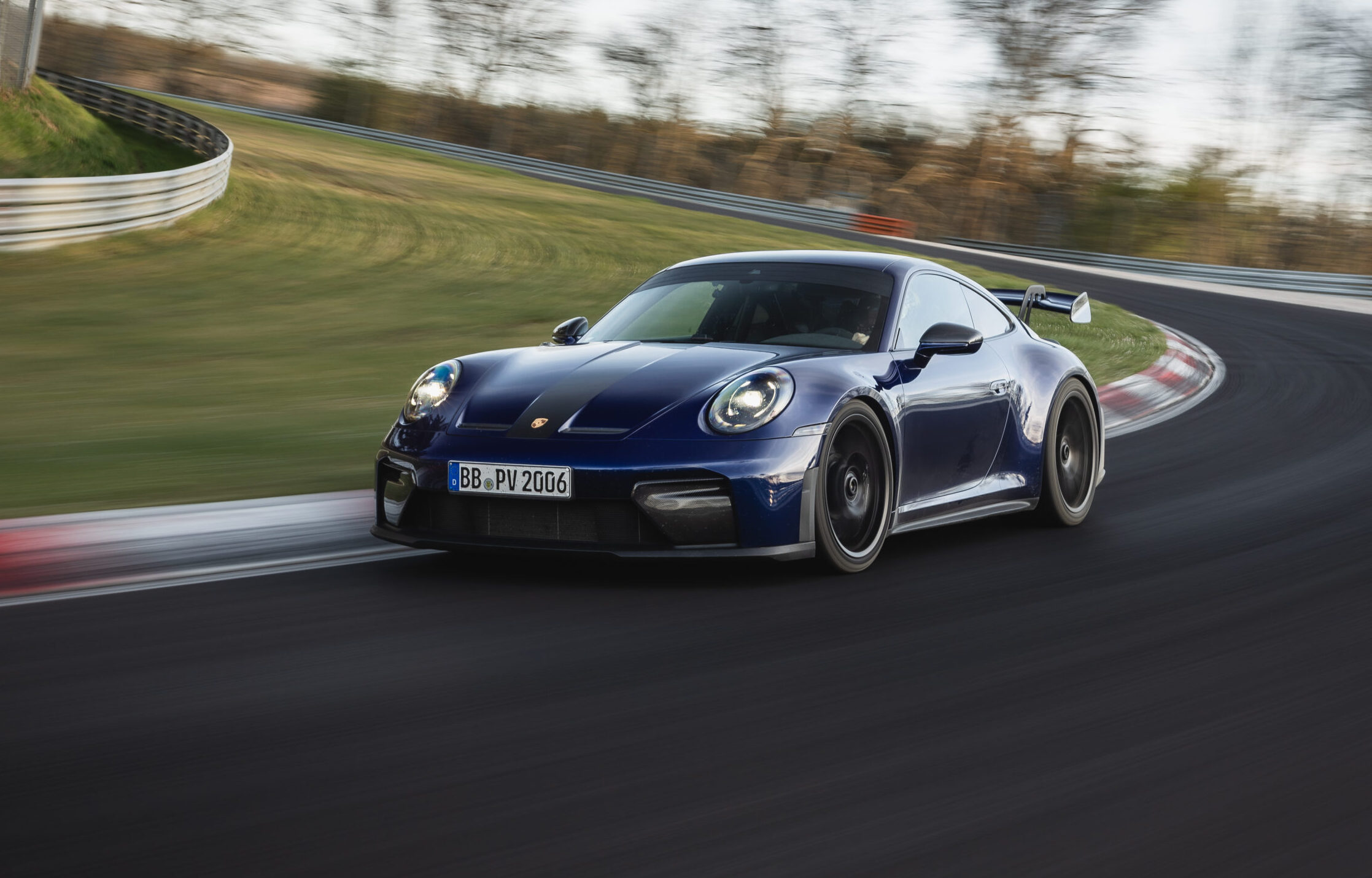Volkswagen Australia will launch a new addition to its SUV line-up in 2025, with the seven-seat Tayron SUV confirmed to follow the next-generation Tiguan.
Snapshot
- Tayron slots between Tiguan and Touareg, offering seven seats with hybrid & turbo petrol options
- Expect up to 2090 litres of storage, advanced driver assistance, and all-wheel drive options
- Australian launch expected in late 2025, following the mid-year release of the new Tiguan
The Tayron will arrive in Australia with a design and platform closely related to the new-generation Tiguan, expanding Volkswagen’s options for family-focused SUVs.
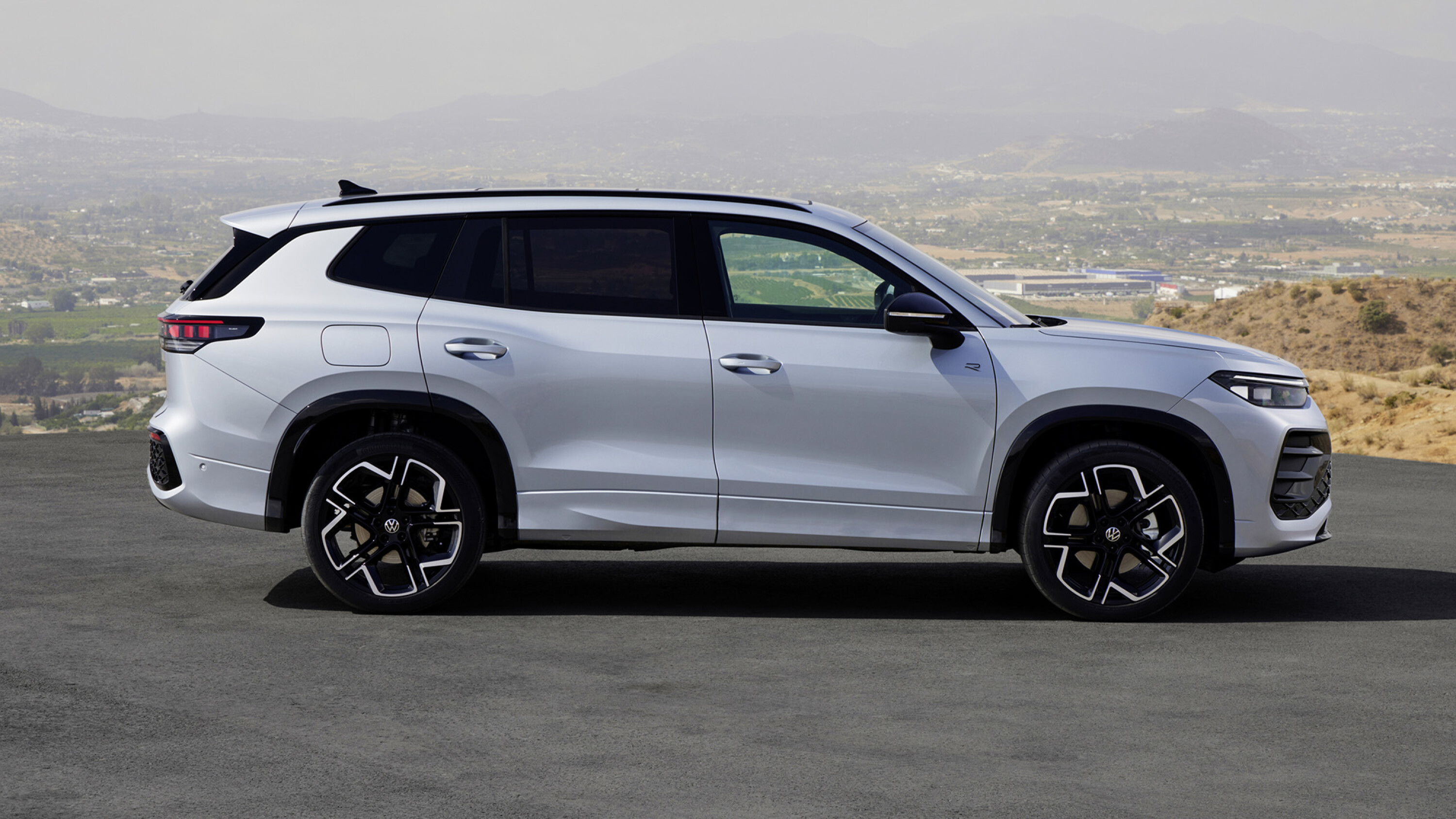
Size and platform
Positioned as a larger alternative to the Tiguan, the Tayron measures 4770mm in length and 1852mm in width, making it 284mm longer and 13mm wider than the outgoing Tiguan Allspace.
The wheelbase remains unchanged from the Allspace’s 2791mm, again riding on Volkswagen’s MQB ‘evo’ platform.
As with the Allspace it replaces, the Tayron’s 114mm longer wheelbase than the new Tiguan’s, and its 230mm longer overall body, positions it firmly in the three-row space, while still slotting below the larger and more expensive Touareg.
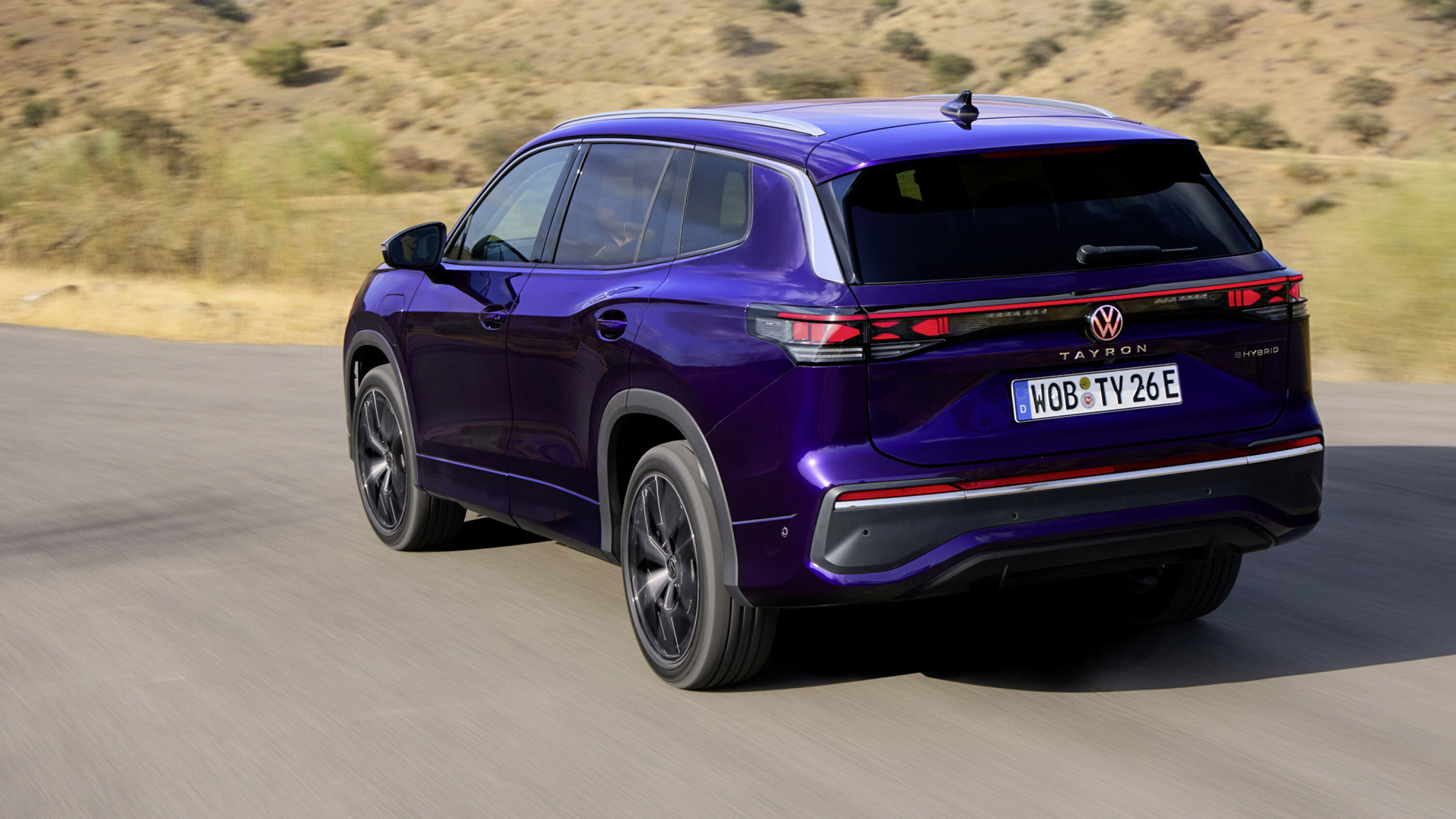
Seating and powertrains
Note: With Australian details still to be revealed, the below specs are what is currently known of the European line-up.
Depending on the market, the Tayron will be available in both five- and seven-seat configurations, with Volkswagen Australia likely prioritising the seven-seat model.
Globally, the SUV will offer a variety of powertrains, including a mild-hybrid petrol, two turbo petrol options, two diesel engines, and two plug-in hybrid electric (PHEV) models.
The European-spec Tayron will start with a 1.5-litre eTSI petrol engine producing 110kW and 250Nm, while the diesel line-up will include a 142kW and 400Nm option.
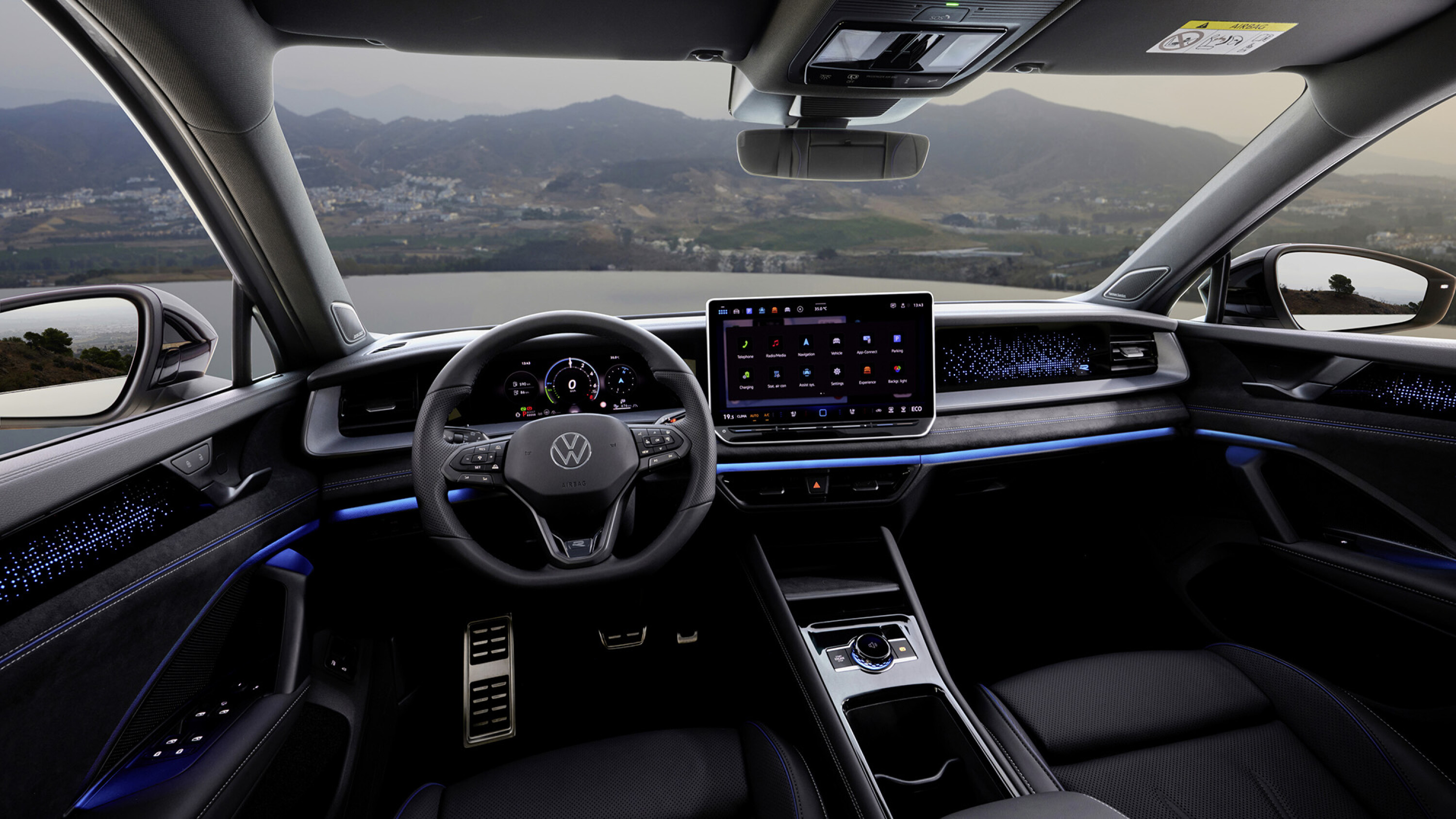
For those seeking electrification, there will be 150kW and 200kW versions of the Tayron PHEV, both featuring a 19.7kWh battery with a claimed electric-only range of up to 100 kilometres.
These models will support 50kW DC fast charging and 11kW AC charging, although they’ll be limited to five seats due to the battery layout.
While Volkswagen has not yet released details on power figures for the entry diesel or turbo petrol engines, the latter are anticipated to be available in 150kW and 195kW variations of Volkswagen’s 2.0-litre engine. Australian buyers can expect the focus to be on turbocharged and electrified petrol variants.
The Tayron’s mild-hybrid and PHEV models will feature front-wheel drive, while the TSI turbo petrol and 142kW diesel engines will come with all-wheel drive and a towing capacity of up to 2500kg.
All models are equipped with a six- or seven-speed DSG dual-clutch automatic transmission, depending on the engine.
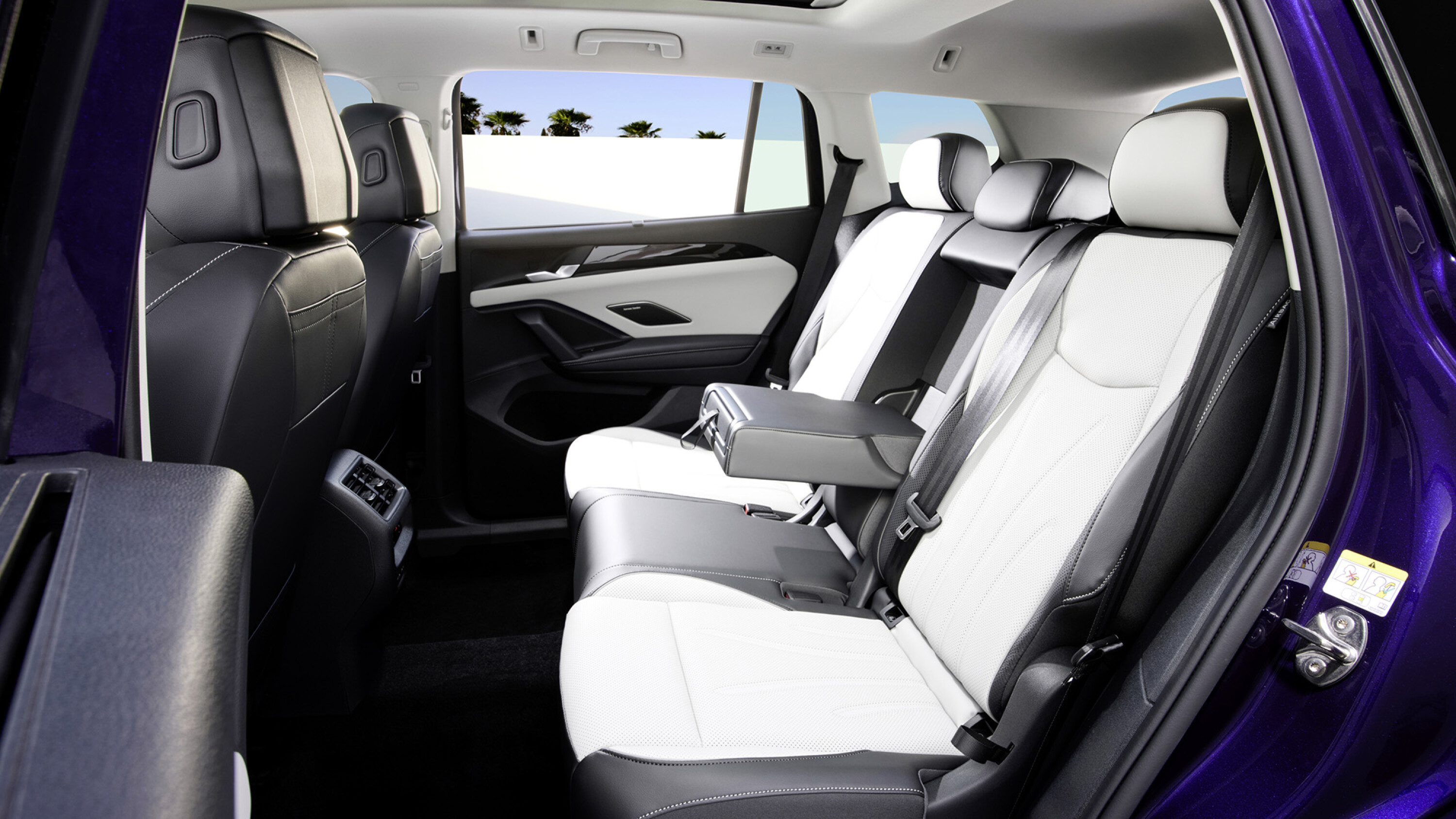
Features and specifications
The Tayron will come with a range of trim levels in Europe, likely to influence Australian offerings.
The base Life trim includes 17-inch alloy wheels, nine airbags, three-zone climate control, a rear-view camera, a digital driver display, and a 12.3-inch central touchscreen with Apple CarPlay and Android Auto connectivity.
Higher trims, including Elegance and R-Line, add features such as 18- or 19-inch alloy wheels, decorative trims in wood or aluminium finishes, noise-insulating glass, an electric tailgate, Park Assist Pro, premium seat upholstery (including sports seats in the R-Line), keyless entry, programmable LED tail-lights, and ambient lighting.
Driver-assist technology will include adaptive cruise control, Front Assist with pedestrian and cyclist detection, Lane Assist for lane centring, and a new exit warning system to prevent door openings when another vehicle or cyclist is approaching.
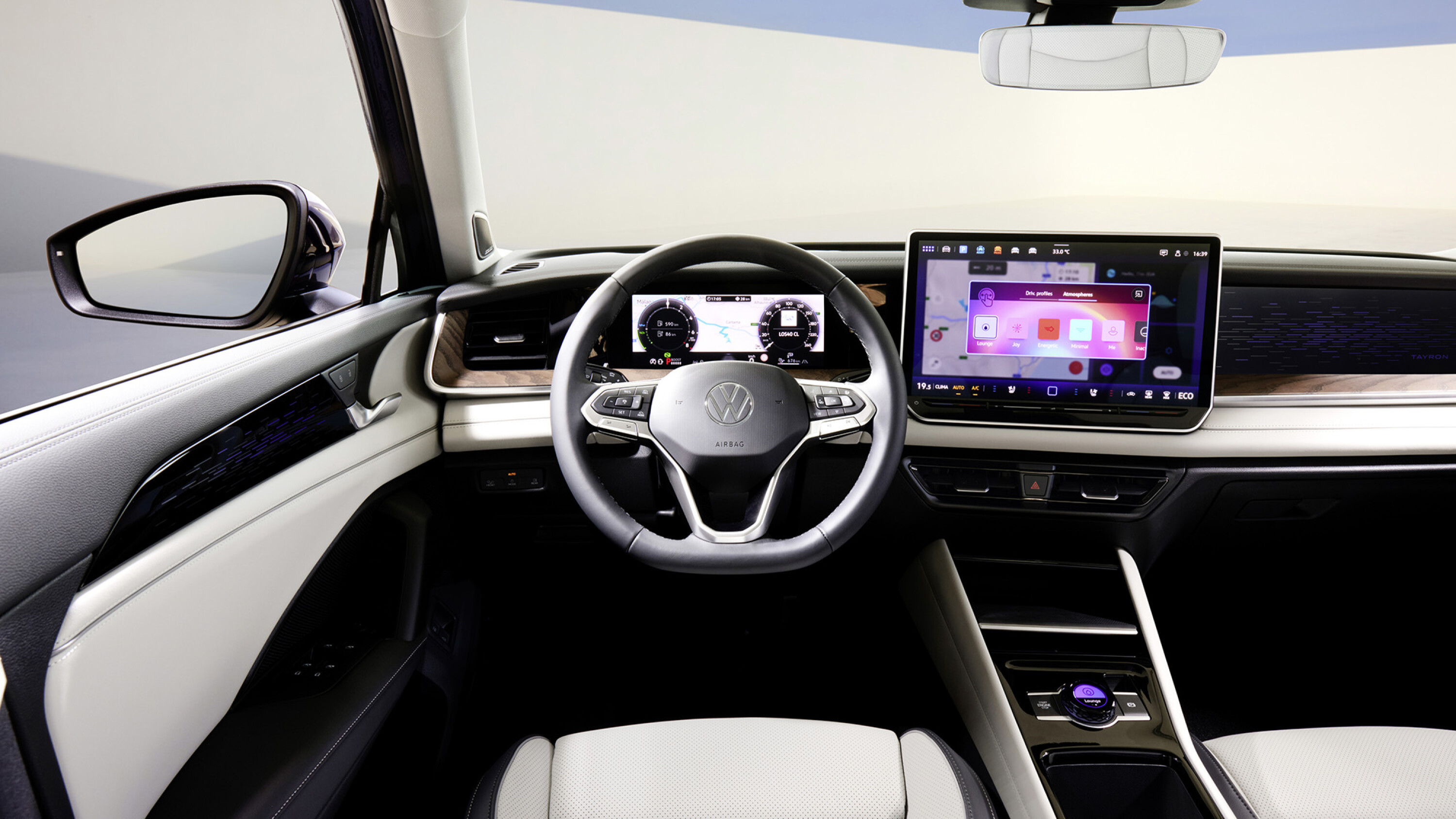
Optional extras
In Europe, the Tayron’s optional packages add advanced features, including adaptive chassis control, IQ.Light Matrix LED headlights, a semi-autonomous Travel Assist feature, a panoramic sunroof, a Harman Kardon sound system, and leather seats with ventilation and massage functions. Availability in Australia is yet to be confirmed.
Boot space
The Tayron’s five-seat variant offers a maximum boot capacity of up to 2090 litres, with the seven-seat configuration reducing this to 1905 litres. The eHybrid model, which houses an electric battery, allows up to 1915 litres.
With the second row in place, the five-seater provides 885 litres, the seven-seater has 850 litres, and the eHybrid holds 705 litres. In the seven-seat variant, retaining all three rows for passengers reduces luggage space to 345 litres.
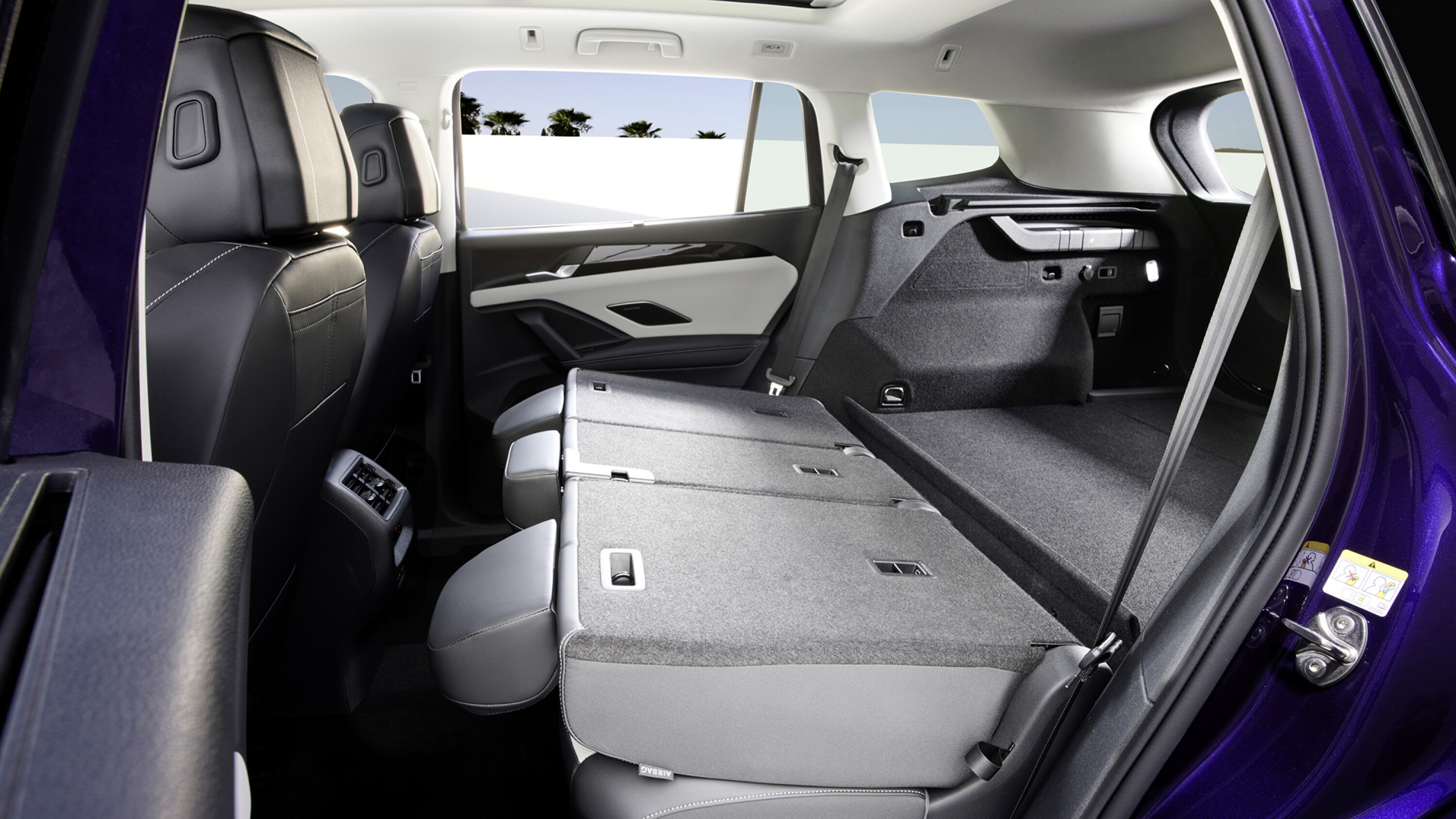
Australian arrival
Volkswagen’s new Tiguan is set to launch in Australia in the second quarter of 2025, with the larger Tayron to follow in the later months of that year.
As Australia’s interest in larger family SUVs with hybrid and electric options grows, the Tayron could provide another competitive offering for buyers in search of versatile seating and a variety of powertrain choices.


